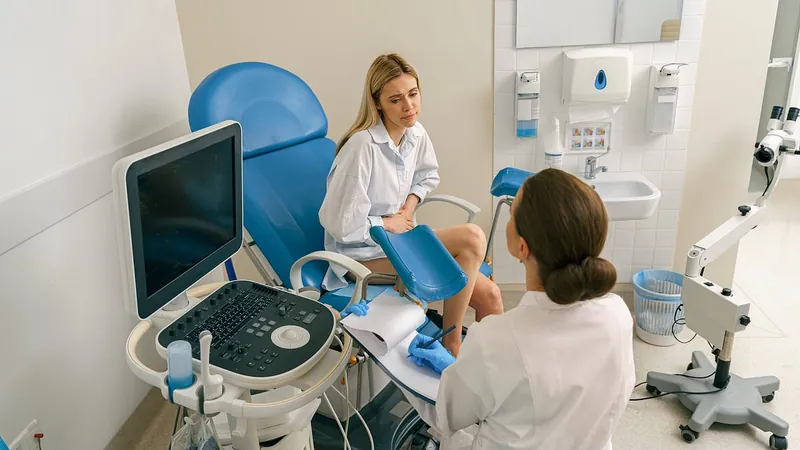
Shocking STI Rates in the U.S.: Which States Plague Your Health?
2025-01-18
Author: Ken Lee
Introduction
Your likelihood of contracting a sexually transmitted infection (STI) can vary dramatically across the United States, with some areas seeing rates up to 31 times higher than others.
Top States for STI Rates
At the top of the list, Mississippi has earned the unfortunate title of the state with the highest STI rates, including notorious infections like chlamydia, gonorrhea, syphilis, and human papillomavirus (HPV). With a staggering score of 9.64 out of 10 in STI rankings, the state’s health crisis is alarming. What's worse? Mississippi also faces hurdles with low HPV vaccination rates—a meager 38.5 percent, significantly lower than the average for the nation.
Following closely is Alaska, where the STI score stands at 8.47 out of 10. Despite its smaller population and overall lower case counts compared to larger states, the relative rates of gonorrhea and chlamydia—25 cases and 701 cases per 100,000 people, respectively—raise red flags for public health officials.
North Carolina isn’t far behind, with a score of 8.37 and 65,867 reported cases of chlamydia, translating to about 608 cases per 100,000 people. Meanwhile, Alabama ranks fourth with a score of 8.27, followed by Arkansas, which faced a shocking 67 percent increase in HIV cases last year.
Georgia stands out for holding the highest rate of HIV infections in the nation as of 2022, with 23 cases per 100,000 individuals—more than double the national average of 11.8. Other states in the top 10 include Louisiana (7.96), South Carolina (7.86), Nevada (7.66), and Florida (7.6). Alarmingly, many of these states prioritize abstinence education rather than comprehensive sex education, resulting in a significant gap in critical knowledge among the youth.
Resilient States Against STIs
On the flip side, there are states that show resilience against STIs. New Hampshire boasts one of the lowest STI scores of 0.31, accompanied by the highest HPV vaccination rate at an impressive 76.2 percent. It has reported only 588 cases of gonorrhea, about 42 per 100,000 individuals, along with low chlamydia rates at 197 per 100,000.
Vermont follows with a score of 0.46, having seen a decline in both gonorrhea and syphilis cases in recent years. Idaho, although it has the highest rates of syphilis and chlamydia, maintains relatively lower gonorrhea rates of 40 per 100,000 people, landing it a score of 1.37.
Trends in STI Rates
From 2019 to 2023, there's been a disturbing trend of rising STI rates, indicative of a national public health crisis fueled by declining condom usage and inadequate sexual education. Alarmingly, the number of adults with STIs stands at roughly one in every 100, with about 1.6 million cases of chlamydia reported last year alone.
Demographics Impacted
As for demographics, 15 to 24-year-olds are the group most affected; they comprise only a quarter of the population yet account for half of all new STIs. Chlamydia is the most prevalent STI in the U.S., primarily among those aged 20 to 24.
Potential Shifts in STI Statistics
Despite the dire situation, some statistics suggest a possible shift, as 2023 saw a reported 2.4 million STIs—a slight decline from the previous year. Gonorrhea cases have also dropped for the second consecutive year, indicating a potential turning point in the STI epidemic in America.
Consequences of Untreated Infections
The consequences of untreated infections can be severe. Syphilis, for example, can lead to irreversible health issues, transforming from external sores to internal damage to vital organs without proper intervention. Gonorrhea can result in serious complications, including infertility—yet some strains show resistance to standard antibiotics, complicating treatment options.
Conclusion
While the rise in STI rates paints a grim picture, these patterns motivate a renewed focus on education and prevention in sexual health. It's crucial that we not only understand the statistical landscape of STIs but take proactive steps towards prevention, awareness, and education to combat this growing crisis.



 Brasil (PT)
Brasil (PT)
 Canada (EN)
Canada (EN)
 Chile (ES)
Chile (ES)
 Česko (CS)
Česko (CS)
 대한민국 (KO)
대한민국 (KO)
 España (ES)
España (ES)
 France (FR)
France (FR)
 Hong Kong (EN)
Hong Kong (EN)
 Italia (IT)
Italia (IT)
 日本 (JA)
日本 (JA)
 Magyarország (HU)
Magyarország (HU)
 Norge (NO)
Norge (NO)
 Polska (PL)
Polska (PL)
 Schweiz (DE)
Schweiz (DE)
 Singapore (EN)
Singapore (EN)
 Sverige (SV)
Sverige (SV)
 Suomi (FI)
Suomi (FI)
 Türkiye (TR)
Türkiye (TR)
 الإمارات العربية المتحدة (AR)
الإمارات العربية المتحدة (AR)